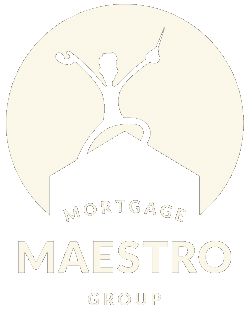 There are certain standard costs associated with closing the sale of a house. Buyers almost always incur these closing costs, as the real estate sales contract specifies, however, depending on the contract the seller may have to split some of the closing costs. “Closing Costs” are the fees which cover the various services involved in the sale of a house. These fees are either paid out of pocket or indirectly by increasing the loan amount or charging a higher interest rate.
There are certain standard costs associated with closing the sale of a house. Buyers almost always incur these closing costs, as the real estate sales contract specifies, however, depending on the contract the seller may have to split some of the closing costs. “Closing Costs” are the fees which cover the various services involved in the sale of a house. These fees are either paid out of pocket or indirectly by increasing the loan amount or charging a higher interest rate.
As indicated below, many of the closing costs result from getting your mortgage loan. At Mortgage Maestro, we are highly experienced in residential mortgage lending, so we can compile a comprehensive list of closing costs related to your mortgage in your estimate.
Within three days after you apply for a loan, we’ll give you a Loan Estimate. The Loan Estimate lays out information like insurance and taxes, closing costs, monthly payments and more. This estimate is not an approval, rather it’s the first step toward securing your loan. Do bear in mind a loan estimate will have some inaccuracies, so make sure to watch the video above for a deeper dive.
This is the one closing cost that is often prorated between the buyer and seller. If the seller has already paid the annual property taxes, the buyer typically reimburses the seller for the period in which the buyer will be occupying the property. Likewise, if the taxes have not yet been paid, the seller typically reimburses the buyer for the period in which the seller occupied the property.
This is the cost for transferring ownership of the property and recording the purchase documents. The fee is often calculated as a percentage of the sales price.
Homeowner’s InsuranceThis insurance covers replacement costs for damages caused by fire, wind or other disaster that might affect the value of the property. Typically, the insurance also includes personal liability and theft coverage. There will be one year paid at closing, plus the necessary amount to setup your escrow account if you include this in your payment. |
Flood or Quake InsuranceAdditional hazard insurance coverage that is required for homes located in a designated hazard zone as established by the Federal Emergency Management Agency (FEMA). An appraiser, inspector, or your realtor can let you know if a property resides in a hazard zone. |
Private Mortgage Insurance (PMI)Insurance required for conventional mortgage loans when the borrower’s down payment on the house is less than 20 percent of the loan value. This is part of your monthly payment that is paid the a 3rd party mortgage insurance provider to offset the lender’s risk given the down payment being less than 20% on your home purchase. |
Title InsuranceThis policy protects both the buyer and lender by insuring a clear chain of title. (In other words, it insures that that the person who sells the house has the legal right to do so.) |
An option for the home buyer is to pay points (a fee) to permanently lower the interest rate. This becomes part of what is brought to closing by the buyer. Each point equals 1 percent of the mortgage loan amount. For example: on a $150,000 loan, 1 point would equal $1,500. DO NOT CONFUSE THAT IT DOESN’T MEAN THE RATE IS 1% LOWER BY PAYING A DISCOUNT POINT.
The fee for having the house appraised will likely be collected at appraisal order by your lender. This fee varies by property type, location, and even loan type. One tip for Veterans is VA publishes a VA appraisal fee schedule. All appraisals are paid by invoice so you never over pay for this required third party service.
The lender uses a credit report to determine the creditworthiness of the loan applicant. This fee is often paid when the loan application is submitted. You also only pay the invoiced amount.
Typically the buyer is required to pay interest on the mortgage loan to cover the time between the closing date and when the first mortgage payment period begins. For example: If closing is on May 15. Your first monthly payment begins to accrue interest on June 1 with your first mortgage payment due July 1. At closing an interest payment covering the accrual period between May 15 and May 31 is required.
At closing a payment may be required to fund the escrow account if the lender is paying home insurance, property taxes and/or other expenses out of the escrow account.

Licensed in Colorado as Maestro LLC (DBA Mortgage Maestro Group) is an Equal Housing Lender.
Consumers wishing to file a complaint against a company or a residential Mortgage loan originator should complete and send a complaint form to the Texas department of savings and mortgage lending, 2601 North Lamar, suite 201, Austin, Texas 78705. Complaint forms and instructions may be obtained from the Department’s website at www.sml.texas.gov. A toll-free consumer hotline is available at 1-877-276-5550. The department maintains a recovery fund to make payments of certain actual out of pocket damages sustained by borrowers caused by acts of licensed residential mortgage loan originators. A written application for reimbursement from the recovery fund must be filed with and investigated by the department prior to the payment of a claim. For more information about the recovery fund, please consult the department’s website at www.sml.texas.gov.
Home Mortgage Disclosure Act Notice. The HMDA data about our residential mortgage lending are available online for review. The data show geographic distribution of loans and applications; ethnicity, race, sex, age and income of applicants and borrowers; and information about loan approvals and denials. HMDA data for many other financial institutions are also available online. For more information, visit the Consumer Financial Protection Bureau’s website.
